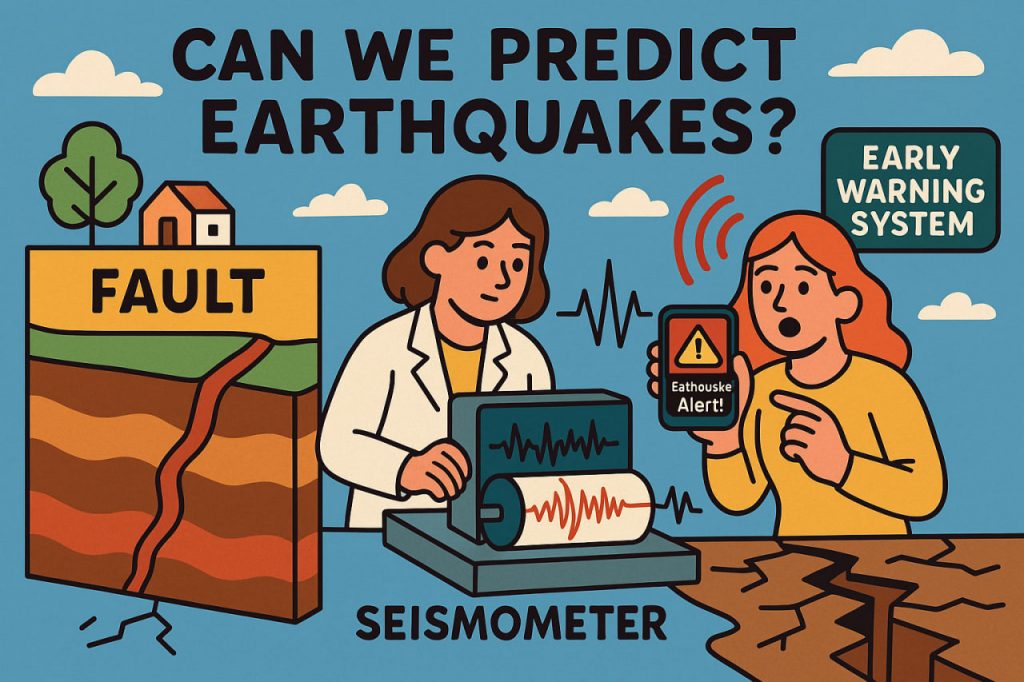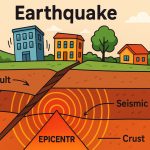The question of whether humanity can truly predict earthquakes has fascinated scientists, governments, and ordinary citizens for decades. Despite vast technological progress, the brutal truth remains: no one can yet pinpoint the exact time, location, and magnitude of a future earthquake. However, modern seismology has evolved to the point where forecasting probabilities and issuing early warnings are possible. These systems save countless lives and continue to advance through data analysis, artificial intelligence, and global monitoring networks.
The Difference Between Prediction and Forecasting
An earthquake prediction aims to specify when and where an earthquake will happen and how strong it will be. So far, this remains beyond human capability. Forecasting, on the other hand, deals with probabilities over time. For example, scientists can estimate that there is a 60% chance of a magnitude 7 earthquake occurring along a specific fault within 30 years. These probabilistic forecasts rely on historical seismic activity, fault stress accumulation, and geological data. Early warning systems, which are often confused with prediction, function by detecting the first seismic waves (P-waves) and sending alerts before the more destructive waves (S-waves) arrive. This can buy people a few seconds to seek safety.
Why Exact Prediction Is Still Impossible
The inability to predict earthquakes stems from the immense complexity of Earth’s crust. Rock formations deep underground behave in chaotic, nonlinear ways, and small variations in stress or composition can trigger or prevent a rupture. Unlike hurricanes or volcanoes, earthquakes do not provide clear pre-signals that can be measured with current technology. Attempts to identify reliable precursors—such as electromagnetic emissions, changes in groundwater chemistry, or animal behavior—have all failed to provide consistent results. The chaotic nature of fault mechanics and limited access to the planet’s interior mean that true earthquake prediction remains one of Earth science’s greatest unsolved challenges.
Advances in Monitoring and Early Warning
Even though prediction is impossible, science has made remarkable progress in forecasting and early detection. Dense networks of seismometers, GPS stations, and satellites continuously monitor the shifting of tectonic plates. Early warning systems like Japan’s J-Alert and the U.S. ShakeAlert can detect an earthquake within seconds of its start, allowing alerts to reach cities before the strongest waves arrive. In addition, new technologies—such as using smartphones as mini seismometers or integrating AI to detect subtle crustal changes—are rapidly improving response capabilities. These innovations cannot stop an earthquake but can dramatically reduce injuries and economic damage.
Machine Learning and the Future of Seismology
In recent years, machine learning models have been trained on massive datasets from seismic activity around the world. These algorithms can identify subtle patterns that human analysts might overlook, potentially improving probability forecasts. In controlled laboratory experiments simulating fault motion, AI systems have been able to predict small rupture events with surprising accuracy. However, scaling these results to the complexity of real-world tectonic systems remains a monumental challenge. Some experts believe that combining physics-based simulations with big data approaches could one day reveal meaningful predictive indicators.
Preparing for the Unpredictable
Since precise prediction remains out of reach, the best strategy is preparedness. Building codes in earthquake-prone areas are critical: structures designed to absorb seismic energy can save thousands of lives. Public education—such as teaching people to “Drop, Cover, and Hold On”—also plays a vital role. Governments and communities can strengthen infrastructure, create evacuation plans, and ensure that emergency supplies are readily available. Ultimately, resilience is humanity’s most powerful tool against earthquakes. Even without prediction, knowledge, planning, and technology can drastically reduce their devastating impact.
Interesting Facts
- The U.S. Geological Survey (USGS) officially states that no scientist has ever successfully predicted a major earthquake.
- Japan’s early warning system can alert people up to 30 seconds before the shaking begins.
- Google has turned billions of Android smartphones into a global seismic sensor network, detecting earthquakes in real time.
- The San Andreas Fault in California moves a few centimeters every year, gradually building up stress that could trigger future large quakes.
- Machine learning models have shown promise in laboratory settings but have not yet worked for real-world earthquake prediction.
Glossary
- Seismology – The scientific study of earthquakes and the propagation of elastic waves through the Earth.
- Fault Line – A fracture in Earth’s crust where blocks of rock have moved relative to each other.
- P-Wave (Primary Wave) – The fastest type of seismic wave, detected first by instruments.
- S-Wave (Secondary Wave) – Slower but more destructive seismic waves that follow P-waves.
- Epicenter – The point on the Earth’s surface directly above where an earthquake originates.
- Magnitude – A measure of the energy released by an earthquake.
- Seismograph – An instrument that records the vibrations of the ground caused by seismic waves.
- Early Warning System – A technology that detects the initial signs of an earthquake and sends alerts before major shaking starts.
- Tectonic Plates – Massive sections of Earth’s crust that move and interact, causing earthquakes and volcanic activity.
- Machine Learning – A branch of artificial intelligence that allows computers to learn from data patterns without explicit programming.


